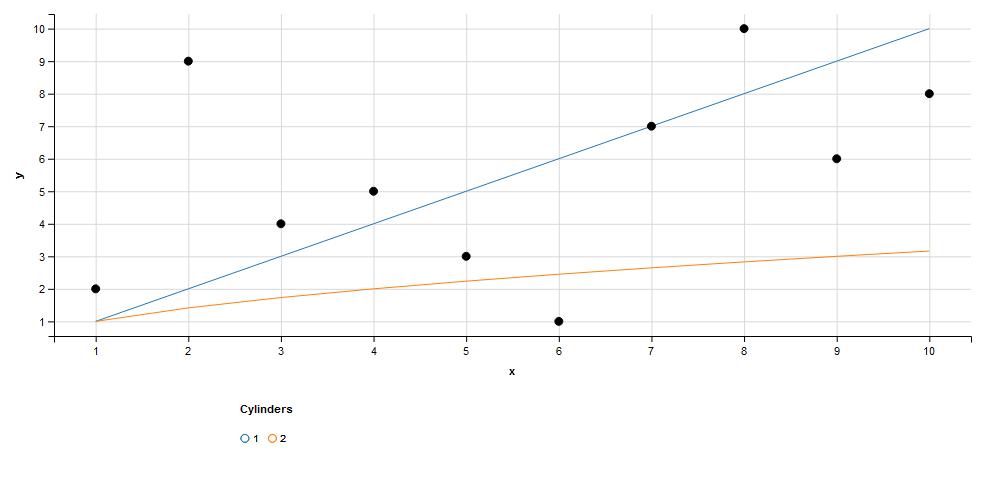I'd like to make a horizontal legend below the ggvis chart. I can use legend properties to place it below the chart, but don't know how to make the labels horizontal below the legend title. Below is the minimum reproducible code (grabbed from the web).
df1 = data.frame(x=sample(1:10), y=sample(1:10))
df2 = data.frame(x=1:10, y=1:10)
df3 = data.frame(x=1:10, y=sqrt(1:10))
df2$id <- 1
df3$id <- 2
df4 <- rbind(df2,df3)
df4$id <- factor(df4$id)
df4 %>% ggvis(x=~x, y=~y, stroke=~id) %>% layer_lines() %>%
# make sure you use add relative scales
add_relative_scales() %>%
# values for x and y need to be between 0 and 1
# e.g for the x-axis 0 is the at far-most left point and 1 at the far-right
add_legend("stroke", title="Cylinders",
properties=legend_props(
legend=list(
x=scaled_value("x_rel", 0.2),
y=scaled_value("y_rel", -.2)
))) %>%
layer_points(x=~x, y=~y, data=df1, stroke:='black')


ggvisyet? – Franctireur